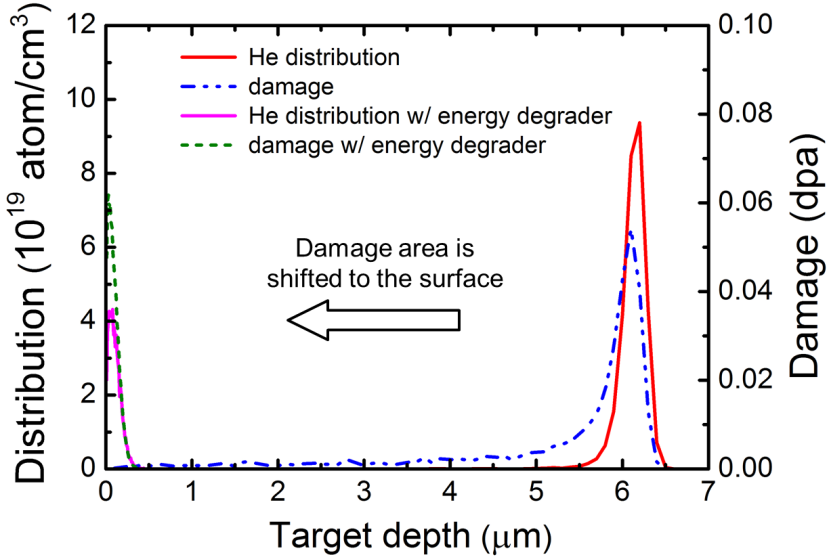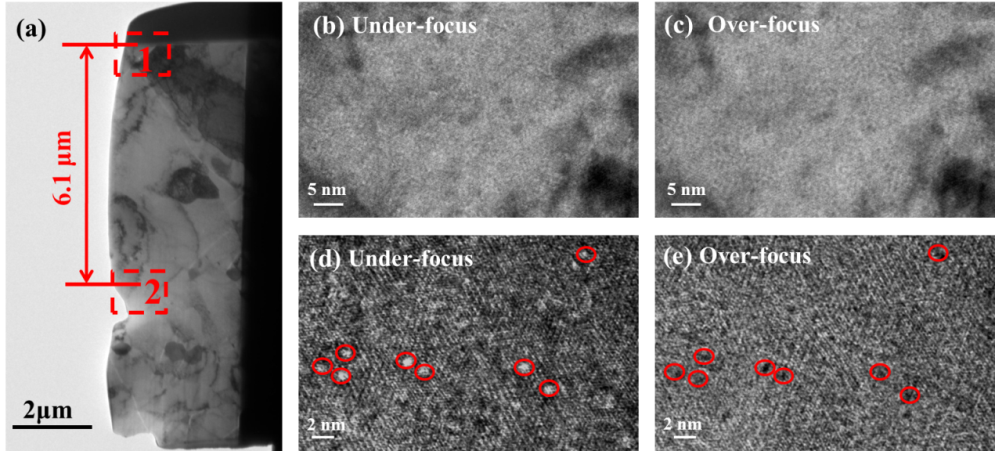
Tritium and deuterium are the isotopes of Hydrogen as well as act as the fuel of fusion reaction.
However, in fusion reactors, tritium may penetrate through the first wall of internal components into coolant, which leads to its loss and low economic efficiency considering its high cost. Besides to the low efficiency by its penetrating, it also generates radioactivity.
For building fusion reactor facility, reduced activation ferritic/martensitic, or RAFM steel is the prior candidate for its internal components. How the tritium retent in RAFM concerns all of the scientists working on the fusion reactor facility.
Dr. ZHOU Haishan and his team, working with Institute of Plasma Physics, Hefei Institutes of Physical Science, have been studying on the suppressing of hydrogen isotopes retention in RAFM steel for years.
Recently, they found that the deeply pre-injected He can reduce H bulk trapping, whereas the surface damage induced by He significantly increase H retention.
To clarify the two possible effects on H retention, the group performed a series of experiments.
He-damaged layers at the surface and inside the RAFM bulk are induced by 3.5 MeV He ion bombardments with and without energy degrader, respectively. Iron (Fe) ionpre-irradiation is performed as a comparison so that He effects are clearly distinguished.
The above research has been published by Nuclear Fusion.

He and irradiation damage distribution for 3.5 MeV He ion into RAFM steel (Image by ZHOU Haishan)

TEM images for 3.5 MeV He ion pre-damaged RAFM steel (Image by ZHOU Haishan)

D thermal desorption spectroscopy measurements after plasma exposures (Fe ion experiments for comparison) (Image by ZHOU Haishan)

86-10-68597521 (day)
86-10-68597289 (night)

52 Sanlihe Rd., Xicheng District,
Beijing, China (100864)

